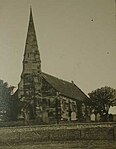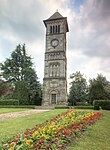Lichfield Canal

The Lichfield Canal, as it is now known, was historically a part of the Wyrley and Essington Canal, being the section of that canal from Ogley Junction at Brownhills on the northern Birmingham Canal Navigations to Huddlesford Junction, east of Lichfield, on the Coventry Canal, a length of 7 miles (11.3 km). The branch was abandoned in 1955, along with several other branches of the Wyrley and Essington, and much of it was filled in. Restoration plans were first voiced in 1975, and since 1990, the Lichfield and Hatherton Canals Restoration Trust have been actively engaged in excavating and rebuilding sections of the canal as they have become available. Major projects have included an isolated aqueduct over the M6 Toll motorway, ready for when the canal reaches it.
Excerpt from the Wikipedia article Lichfield Canal (License: CC BY-SA 3.0, Authors, Images).Lichfield Canal
Wall Lane, Lichfield
Geographical coordinates (GPS) Address Nearby Places Show on map
Geographical coordinates (GPS)
| Latitude | Longitude |
|---|---|
| N 52.6665 ° | E -1.8589 ° |
Address
Wall Lane
Wall Lane
WS13 8JX Lichfield
England, United Kingdom
Open on Google Maps










